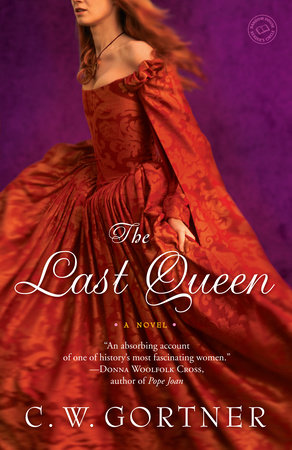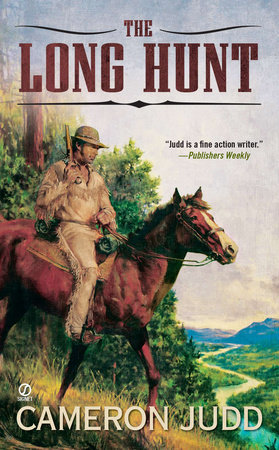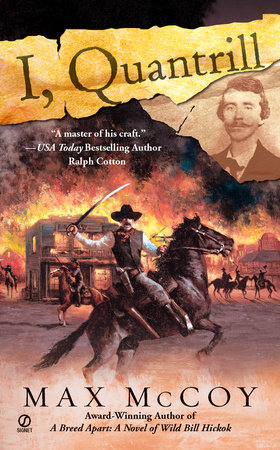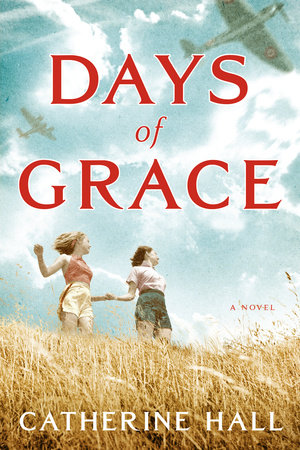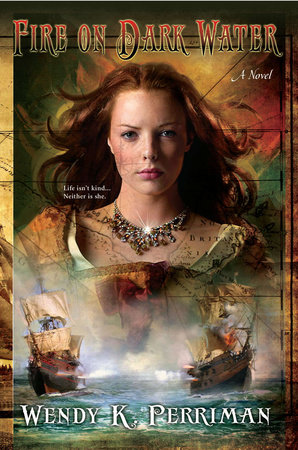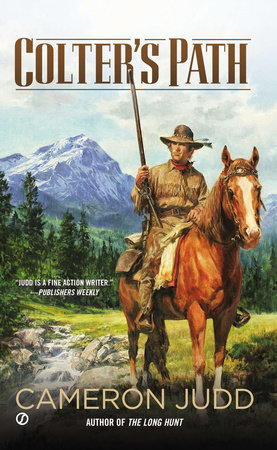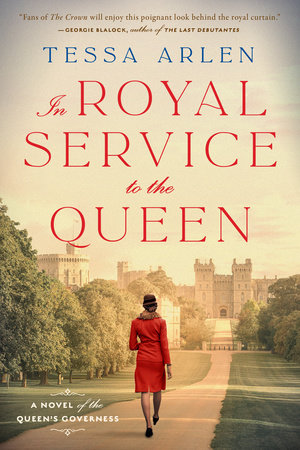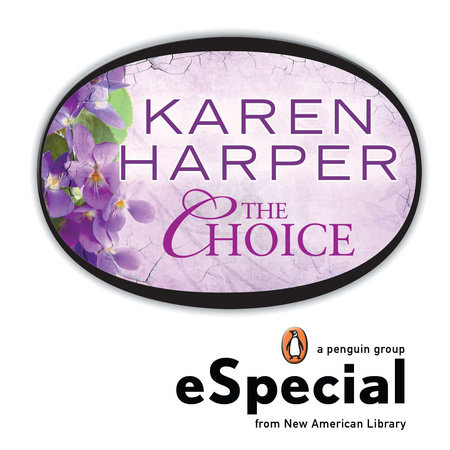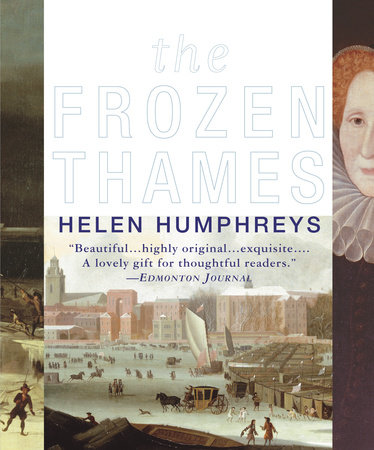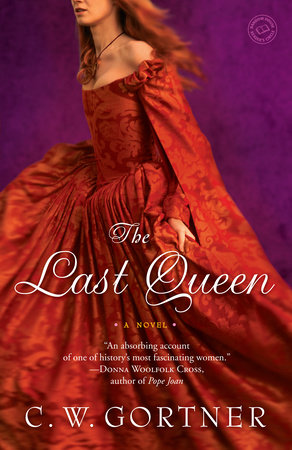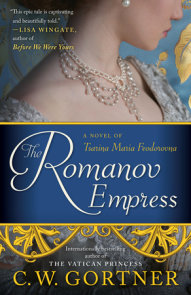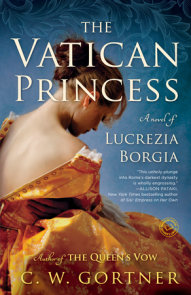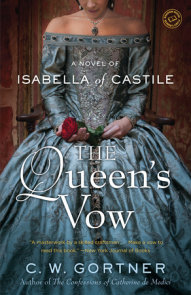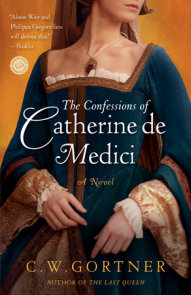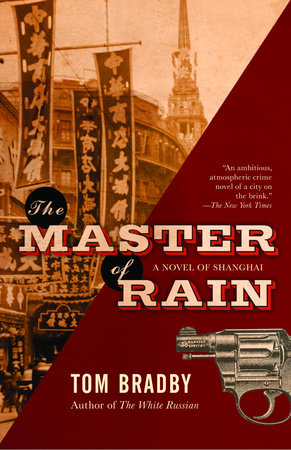Author Q&A
A Conversation with C.W. Gortner
Random House Reader’s Circle: How did the idea for The Last Queen originate?
C.W. Gortner: I’m often asked how I became interested in Juana la Loca. I can’t remember a time when I wasn’t. I am half Spanish by birth and was raised in Spain: I’m bilingual. My maternal grandfather, Tomás Blanco, was a famous film actor in Spain whose career spanned from the early forties well into the seventies; and my grandmother Pilar Gomez del Real was a well-known theater actress who portrayed Juana on stage. I lived near a castle that had belonged to Juana’s parents, Isabella and Ferdinand. Clambering to its highest tower, I knew Juana had touched those same stones and perhaps marveled, as I did, at the landscape’s beauty.
During a school trip to Granada, where Juana is buried, I found myself entranced by the marble effigy of this woman, whose face is turned away from the figure of her dead husband beside her. Most schoolchildren in Spain know the tale of Juana la Loca; she is legendary. But I immediately wanted to know more. What was she like in real life? Did she really pull her husband’s bier behind her throughout the country, venerating his corpse? What happened to her to plunge her into such despair? And what if her mythical story only tells half the tale? My vision of this vibrant princess who became the last queen of Spanish blood to inherit the throne was at odds with the bereft queen of legend, so I set out to discover if what I suspected about her was true. I felt she deserved a chance to tell her side of the story.
RHRC: How long did it take you to write the book, and what special research was involved?
CWG: It took me five years to write The Last Queen. As far as special research is concerned, I took two separate trips to Spain, including one in which I undertook the very journey Juana made from Burgos to her last home in Tordesillas. I visited the Alhambra and the castles associated with her, and read every contemporary account about her that I could find, including letters from her custodians to Charles V, which are currently archived in Simancas.
It is interesting to note that during General Franco’s dictatorship (the last years of which I experienced as a child), some of the documents in Simancas were restricted to scholars who were required to have special permission to access them. The documents pertaining to Juana were included in these restrictions. I found it particularly fascinating that hundreds of years after her death the government still found it necessary to “hide” certain evidence about her. However, by the time I was researching, the documents had been made available and they provided an invaluable if at times chilling framework for the novel, in terms of which parts of her life I wanted to focus on.
RHRC:Why are you drawn to historical fiction?
CWG: Since childhood, I’ve loved historical fiction and I’m very happy that the genre has become so popular again. The truth is, it’s one of the oldest and finest traditions in fiction. Many of today’s novelists bring fresh, exciting perspectives to it but the basic methods for conjuring up history and the people who lived it hasn’t changed. Historical fiction at its best helps us see where we are by revealing where we’ve been. I believe such classic writers as Alexandre Dumas and Rafael Sabatini turned to historical fiction because history exerts such a powerful influence on us. I write historical fiction because I want to immerse myself in a different time and still make sense of the world I inhabit today.
RHRC: How do you strike a balance between history and fiction? Do you think accuracy is a primary obligation for historical fiction authors?
CWG: The balance between fact and fiction in an historical novel like mine is often a delicate one. It can even become tenuous, in particular when you are confronting issues of religion, race, sexuality, and gender. I write about people in the sixteenth century; I do not share their beliefs. The Renaissance was a brutal, quixotic, and complex time in history. As much as I strive to bring it to life for readers, the truth is we can never truly understand what it was like to actually live in the sixteenth century. The best even a very gifted historical novelist can achieve is a close approximation.
That said, I do consider historical accuracy a primary obligation, in that the writer should not deliberately alter or distort known facts or have characters behave in an overtly modernized way just to suit a particular publishing fad or temperament. To have my lead character march at the head of an army like Joan of Arc, for example, would fly in the face of every known fact about her.
However, facts are only a small part of a life filled with moments, and in the final say, I write fiction. My books are novels; their principal function is to entertain. I hope my readers will become immersed in the story, that they will feel it on a sensory level. I also hope, as a secondary objective, to awaken interest in the time period itself. If someone reads my book and thinks, “I want to know more about Spain in the sixteenth century,” then I’ve done what I’d set out to do. Likewise, if someone reads my book and writes to me, as they have, saying, “I couldn’t wait to turn the page,” that, too, accomplishes my goal as a novelist.
RHRC: How hard was it to write a novel based on a real person?
CWG: It’s always a challenge because imagination is constrained by fact. For example, I can’t change the ending, even if it ends badly. There’s also the challenge of undertaking factual research. I’m obsessive about this part; I have to find out everything I can, and that means getting in contact with libraries and archives, finding out-of-print books, setting up meetings with experts in certain areas, etc.
For The Last Queen, I read over fifty books about Juana and her world. I took several trips, to Spain and to other parts of Europe, to trace her footsteps and view all the places where she lived. I even tried on a sixteenth-century Spanish gown so I could feel its weight and get a feel for how women moved in these ornate, heavy clothes. As a historical fiction writer, I also have to become a psychological sleuth. Facts are facts, but there ’s always more than one side of a story.
Juana herself left almost nothing in her own hand; much of what she said and did was channeled via accounts written by men whose prejudices reflect the era and the version they were paid to tell. (Most historians were hired and paid by the current ruler.) This is where the fictional research comes in and that can be as challenging as factual research. I have to know my interpretation of my character almost as well as I know myself; I must understand her actions and what motivates her. I can’t afford to be ambiguous: I must become the person I’m writing about and stay true to the facts of her life, even if she does something that I, as myself, would not do. The fun part is that in becoming my character, I see her life through her eyes and that often changes everything. It’s a matter of perception.
RHRC: The Last Queen is told in the first person by Juana herself. Why did you decide to use her point of view?
CWG: I actually enjoyed the challenge of telling Juana’s story in the first person. My first drafts were in third person and something elusive was missing. It was only after I allowed myself to slip into Juana’s skin, so to speak, that I began to experience her emotional complexity. There’s a general fallacy that men cannot write women as well as women can. I disagree, just as I disagree that women cannot write from the male perspective. Writers must inhabit their characters in order to bring them to life. We are not limited by gender or appearance. We are invisible. There are no limits other than those of our imaginations.
RHRC:What do you hope readers take away from your work?
CWG: I seek to reveal secret histories, the stories that traditional history has either obscured, distorted, or simply ignored. I also hope readers will come away from my work with the experience that they’ve been on an emotional journey. I want them to feel the way these people lived, their hardships and joys, their differences and similarities with us. Though a Renaissance queen faced issues we don’t, love, hatred, power, intolerance, passion, and the quest for personal liberty are universal themes.
RHRC:What is your latest project?
CWG: I am currently working on a historical novel about Catherine de Medici, tracing her life from her tumultuous childhood in Florence to her rise to power as queen regent of France and mother of the last Valois kings. Catherine has been widely maligned and, I believe, misunderstood. Her leadership and tenacity forestalled the end of the monarchy in France by two hundred years. Without her, the history of Europe and France in particular would be very different. As a contemporary of Elizabeth I and mother-in-law to Mary, Queen of Scots, she is one of a triptych of powerful women ruling in the sixteenth century.
